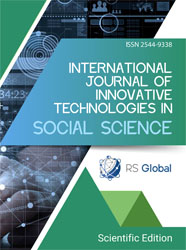INJURY RISK IN KITESURFING: A LITERATURE REVIEW OF THE MOST COMMON TRAUMA PATTERNS AND SAFETY IMPLICATIONS
Abstract
Objective: This review aims to synthesize current evidence on the injury epidemiology of kitesurfing, focusing on common trauma patterns, underlying risk factors, and the effectiveness of safety strategies.
Methods: A systematic literature search was conducted in PubMed and SPORTDiscus for articles published between 2000 and 2024. Studies were included if they reported original quantitative data on kitesurfing-related injuries, including incidence, anatomical distribution, severity, or safety practices. A narrative synthesis was applied due to methodological heterogeneity.
Results: Injury incidence rates ranged from 4.3 to 10.5 per 1, 000 hours of kitesurfing exposure. The most frequently injured areas were the lower extremities, particularly the foot, ankle, and knee. Common injury types included abrasions, sprains, and soft-tissue trauma, with serious injuries such as spinal fractures and head trauma occurring less frequently but with notable severity. Experience level was inversely correlated with injury risk, while environmental factors—such as wind instability and shallow water—significantly contributed to accidents. Although quick-release harness systems are now widely adopted (97%), their real-time use during injury events remains low (7.3%). Helmet (4%) and impact vest (19.5%) usage remains limited despite recommendations.
Conclusion: Kitesurfing presents a distinct injury profile influenced by biomechanical demands, environmental variables, and user behavior. While most injuries are mild and permit rapid return to sport, severe cases still occur, underscoring the need for improved safety education, structured training, and increased protective gear compliance. Future research should emphasize standardized reporting and long-term outcome tracking to better inform injury prevention strategies.
References
Bockmann, B., Schulte, T. L., Seybold, D., Boese, C. K., & Godry, H. (2025). Influence of equipment choice and athletic experience on the incidence of kitesurfing injuries - A prospective observational study. Journal of Bodywork and Movement Therapies, 41, 44–47. https://doi.org/10.1016/j.jbmt.2024.10.036
Bourgois, J. G., Boone, J., Callewaert, M., Tipton, M. J., & Tallir, I. B. (2014). Biomechanical and physiological demands of kitesurfing and epidemiology of injury among kitesurfers. Sports Medicine, 44(1), 55–66. https://doi.org/10.1007/S40279-013-0103-4/METRICS
Crimmins, A., Wilson, C., Wilson, M., Lloyd, A., Savva, N., Fernandez, N., Ward, P., & Barrett, M. (2025). How safe is kitesurfing? A review of orthopaedic kitesurfing injuries. Irish Journal of Medical Science, 194(3). https://doi.org/10.1007/S11845-025-03956-X,
Dut, R., Dönmez, G., Kaymakoğlu, M., Talmaç, A., Işık, A., Bayraktar, B., Kaymakoğlu, M., Talmaç, M. A., Bayraktar, B., Adresi, Y., Corresponding, /, Üniversitesi, S. B., Ve, E., Hastanesi, A., Sağlığı, Ç., & Hastalıkları, V. (2020). Analysis of Joint Range of Motion, Balance and Injury among Kitesurfers: a Cross-Sectional Study. Spor Hekimliği Dergisi, 55(2), 122–130. https://doi.org/10.5152/TJSM.2020.168
Gastol, B., Mikolap, K., Olszewski, J., & Blek, N. (2025). Epidemiology and risk factors for traumas in kitesurfing with particular regard to head and spine injuries — a narrative review. Disaster and Emergency Medicine Journal, 10(1), 44–52. https://doi.org/10.5603/DEMJ.101461
HISTORY OF KITESURFING. (n.d.). Retrieved July 26, 2025, from https://www.kitezone.com/articles/history-of-kitesurfing/?utm_source=chatgpt.com
Lundgren, L., Brorsson, S., & Osvalder, A.-L. (2011). Injuries Related to Kitesurfing. International Journal of Sport and Health Sciences, 5(5), 215–219. https://doi.org/10.5281/ZENODO.1333028
Nickel, C., Zernial, O., Musahl, V., Hansen, U., Zantop, T., & Petersen, W. (2004). A prospective study of kitesurfing injuries. American Journal of Sports Medicine, 32(4), 921–927. https://doi.org/10.1177/0363546503262162,
Petersen, W., Hansen, U., Zernial, O., Nickel, C., & Prymka, M. (2002). Mechanisms and prevention of kitesurfing injuries. Sportverletzung-Sportschaden, 16(3), 115–121. https://doi.org/10.1055/S-2002-34751,
Szymski, D., Achenbach, L., Siebentritt, M., Simoni, K., Kuner, N., Pfeifer, C., Krutsch, W., Alt, V., Meffert, R., & Fehske, K. (2021). Injury Epidemiology of 626 Athletes in Surfing, Wind Surfing and Kite Surfing. Open Access Journal of Sports Medicine, 12, 99–107. https://doi.org/10.2147/OAJSM.S316642,
The Complete Beginner’s Guide To Know Everything About Kitesurfing | IKO. (n.d.). Retrieved July 26, 2025, from https://www.ikointl.com/blog/complete-beginners-guide-know-everything-about-kitesurfing?utm_source=chatgpt.com
Torland, V., Thomassen, Ø., & Østerås, Ø. (2024). Kitesurfing and snowkiting injuries in Norway: a retrospective study. BMC Sports Science, Medicine and Rehabilitation, 16(1), 26. https://doi.org/10.1186/S13102-024-00812-W
van Bergen, C. J. A., Commandeur, J. P., Weber, R. I. K., Haverkamp, D., & Breederveld, R. S. (2016). Windsurfing vs kitesurfing: Injuries at the North Sea over a 2-year period. World Journal of Orthopedics, 7(12), 814. https://doi.org/10.5312/WJO.V7.I12.814
van Bergen, C. J. A., Weber, R. I. K., Kraal, T., Kerkhoffs, G. M. M. J., & Haverkamp, D. (2020). Kitesurf injury trauma evaluation study: A prospective cohort study evaluating kitesurf injuries. World Journal of Orthopedics, 11(4), 243–251. https://doi.org/10.5312/WJO.V11.I4.243
Views:
91
Downloads:
25
Copyright (c) 2025 Bartosz Żegleń, Patryk Macuk, Anna Leśniewska, Julia Tarnowska, Filip Szydzik, Michał Gniedziejko, Dominika Nowak, Marcin Sawczuk, Adam Zarzycki, Aleksandra Gradek

This work is licensed under a Creative Commons Attribution 4.0 International License.
All articles are published in open-access and licensed under a Creative Commons Attribution 4.0 International License (CC BY 4.0). Hence, authors retain copyright to the content of the articles.
CC BY 4.0 License allows content to be copied, adapted, displayed, distributed, re-published or otherwise re-used for any purpose including for adaptation and commercial use provided the content is attributed.















